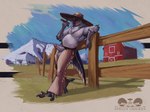
beak
The beak, bill, or rostrum is an external anatomical structure of birds that is used for eating, preening, manipulating objects, killing prey, fighting, probing for food, courtship and feeding young. The terms beak and rostrum are also used to refer to a similar mouth part in dinosaurs, cephalopods, cetaceans, billfishes, pufferfishes, turtles, tadpoles and siren salamanders.
Although beaks vary significantly in size, shape, color and texture, they share a similar underlying structure. Two bony projections—the upper and lower mandibles—are covered with a thin keratinized layer of epidermis known as the rhamphotheca. In most species, two nostril cavities known as nares lead to the respiratory system.
Types
Accessories
Acts/Actions
Anatomy
Appearance
Size
Shape
- A beak may feature more than one of these tags.
- bent_beak
- conical_beak - Beak forms a cone shape.
- curved_beak
- flat_beak
- hooked_beak
- jagged_beak
- long_beak
- narrow_beak
- pointy_beak
- short_beak
- thin_beak
- unusual_beak
Colors
- black_beak
- blue_beak
- brown_beak
- cyan_beak
- green_beak
- grey_beak
- orange_beak
- pink_beak
- purple_beak
- red_beak
- tan_beak
- white_beak
- yellow_beak
Markings/Other
See also
The following tags are aliased to this tag: beack, beaks (learn more).
The following tags implicate this tag: axe_beak, beak_grab, beak_growth, beak_lick, beak_markings, beak_piercing, beak_play, beak_pussy, beak_size_difference, beakstick, bent_beak, big_beak, black_beak, blue_beak, brown_beak, conical_beak, cum_in_beak, cum_on_beak, curved_beak, dark_beak, flaming_beak, flat_beak, glistening_beak, glowing_beak, green_beak, grey_beak, hand_on_beak, hooked_beak, light_beak, multicolored_beak, narrow_beak, nose_beak, open_beak, orange_beak, pink_beak, pointy_beak, purple_beak, red_beak, short_beak, small_beak, spotted_beak, striped_beak, tan_beak, teal_beak, thin_beak, toothed_beak, translucent_beak, unusual_beak, white_beak, yellow_beak (learn more).
Posts (view all)



